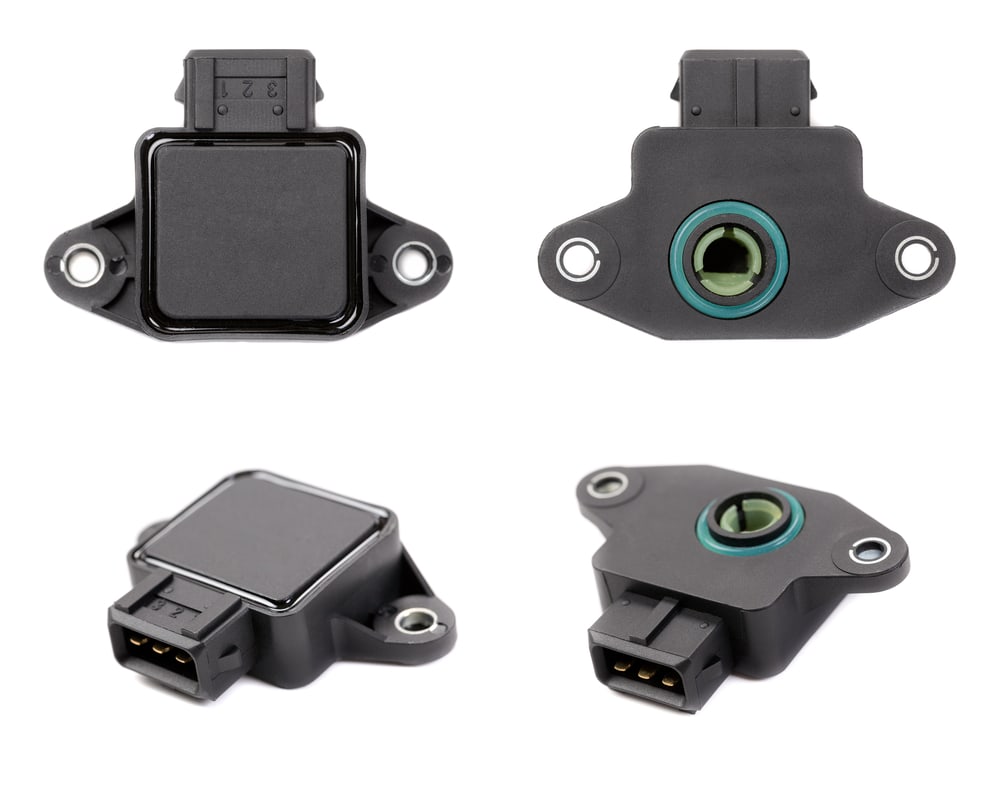

The Manifold Absolute Pressure (MAP) sensor is used by the Powertrain Control Module (PCM) for engine load input. The PCM uses this input, as well as others, to calculate the correct amount of fuel to inject into the cylinders.
The MAP sensor measures the absolute pressure inside the intake manifold of the engine. At sea level, atmospheric pressure is about 14.7 psi (pounds per square inch). When the engine is off, the absolute pressure inside the intake equals atmospheric pressure, so the MAP will indicate about 14.7 psi. At a perfect vacuum, the MAP sensor will read 0 psi. When the engine is running, the downward motion of the pistons create a vacuum inside the intake manifold (For the purposes of engine control, when a technician says vacuum, what they are really saying is pressure that is less than atmospheric pressure). With a running engine, intake manifold vacuum usually runs around 18 - 20 “Hg (inches of mercury). At 20 “Hg, the MAP sensor will indicate about 5 psi. This is because the MAP sensor measures “absolute” pressure, based on a perfect vacuum, rather than atmospheric pressure.
A failed MAP sensor has serious implications on fuel control, vehicle tailpipe emissions and fuel economy. Symptoms of a bad or failing MAP sensor include:
1. Excessive fuel consumption
A MAP sensor that measures high intake manifold pressure indicates high engine load to the PCM. This results in an increase of fuel being injected into the engine. This, in turn, decreases your overall fuel economy. It also increases the amount of hydrocarbon and carbon monoxide emissions from your vehicle to the surrounding atmosphere. Hydrocarbons and carbon monoxide are some of the chemical components of smog.
2. Lack of power
A MAP sensor that measures low intake manifold pressure indicates low engine load to the PCM. The PCM responds by reducing the amount of fuel being injected into the engine. While you may notice an increase in fuel economy, you will also notice that your engine isn’t as powerful as it was before. By reducing the fuel into the engine, combustion chamber temperatures are increased. This increases the amount of NOx (oxides of nitrogen) production within the engine. NOx is also a chemical component of smog.
3. Failed emissions test
A bad MAP sensor will cause your vehicle to fail an emissions test. Your tailpipe emissions may show a high level of hydrocarbons, high NOx production, low CO2, or a high level of carbon monoxide.
A properly trained technician like those at YourMechanic are capable of diagnosing and repairing a failed MAP sensor.



